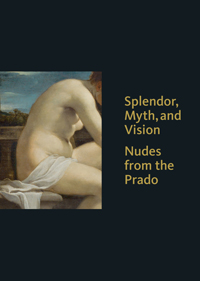
June 11–October 10, 2016
philip iv and peter paul rubens
Peter Paul Rubens
Flemish, 1577–1640
Rape of Hippodamia (The Lapiths and the Centaurs), 1636–38
Oil on canvas
71 7/8 x 112 3/8 in. (182.5 x 285.5 cm)
Museo Nacional del Prado, Madrid
P01658
The great Flemish artist and the Spanish king enjoyed a special relationship in the seventeenth century. Rubens traveled to Madrid twice during his lifetime, as a young artist in 1603–04, and as a mature and renowned painter in 1628–29. During the second visit, Rubens made copies after many of Titian’s works in the royal collections. In the process, Rubens entered into an intense artistic dialogue with the Venetian artist, exploring Titian’s rich use of color, bold brushwork, and sensual subject matter. Shortly thereafter, Philip IV commissioned Rubens to paint a series of more than sixty mythological canvases from Ovid’s Metamorphoses for the royal hunting lodge outside of Madrid, the Torre de la Parada. This complex series of classical mythological scenes appealed to Philip IV’s taste for sensual subjects, but also played an edifying role as moral meditations on the responsibilities of power. Completed in Rubens’s studio in Antwerp by the artist and his associates, the cycle was one of the largest and most significant commissions of Rubens’s career.
A fully illustrated catalogue accompanies the exhibition, with an essay by Javier Portús on the Spanish royal taste in collecting and the role of the sala reservada, as well as a contemporary response to understanding the nude in Renaissance and Baroque painting by Jill Burke. The catalogue is published by the Clark and distributed by Yale University Press. Call the Museum Store at 413 458 0520 to order.

.jpg)

